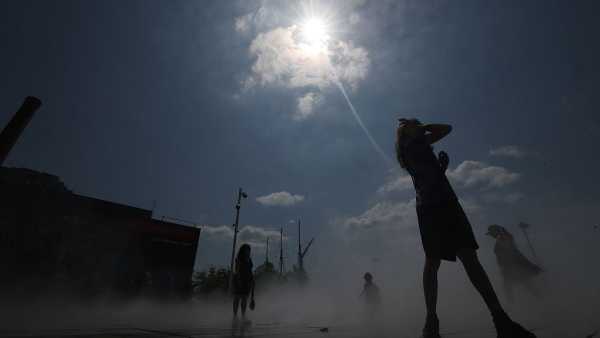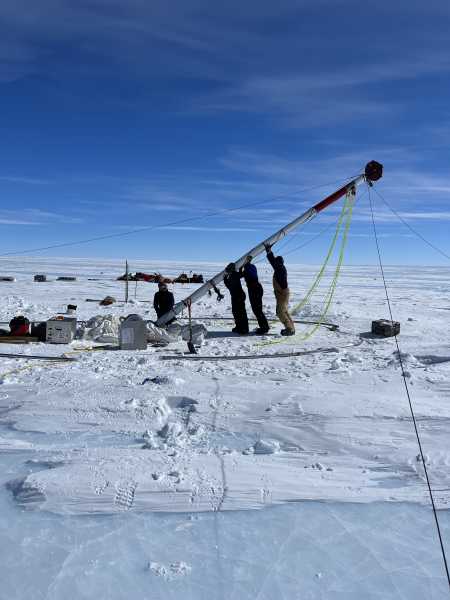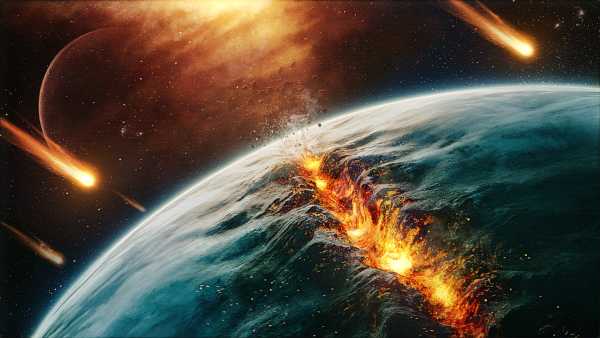
Plate tectonics may have played a more significant role in the evolution of life on Earth than previously thought. (Image courtesy of Nicholas Forder)
The Earth's surface is a turbulent place. Mountains rise, continents converge and move apart, and earthquakes shake the earth. All these processes are the result of plate tectonics—the movement of vast chunks of the Earth's crust.
It is this movement that may be the reason for life on Earth. Earth is the only known planet with plate tectonics and the only known planet to harbor life. Most scientists believe this is no coincidence. By pulling huge chunks of the Earth's crust into the mantle, the middle layer of the Earth, plate tectonics draws carbon from the planet's surface and atmosphere, stabilizing the climate. It also pushes minerals and molecules essential for life to the surface. All these factors combine to create a place where life thrives—from the ocean depths to the majestic mountain peaks.
You may like
-
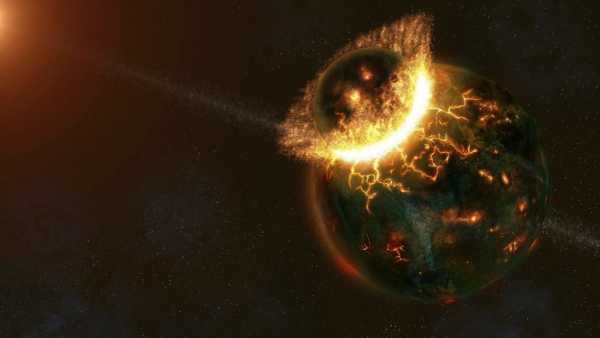
New research suggests that a catastrophic collision with a neighboring planet may be the reason for the existence of life on Earth.
-
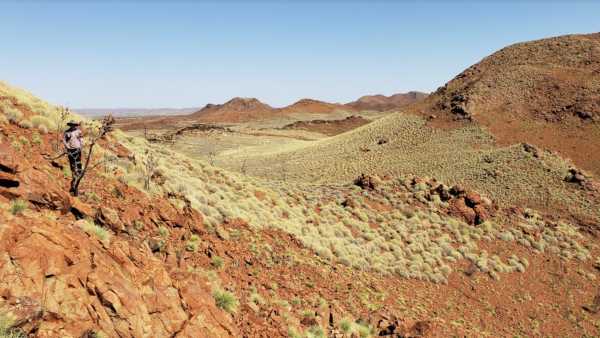
Research raises important questions about Earth's 'oldest' impact crater
-

Scientists have discovered that the geology that supports the Himalayas is not what we thought.
In fact, as new techniques allow scientists to peer ever deeper into the past, some scientists argue that plate tectonics arose soon after the formation of Earth—perhaps even before life itself. If this hypothesis is correct, it could mean that even the most primitive life evolved on an active planet, making plate tectonics a crucial tool in the search for extraterrestrial life.
Destruction of evidence
Only Earth has tectonic plates, like puzzle pieces that collide and separate like toy cars. The other rocky planets in the Solar System have a single, rigid crust—a geological structure scientists call “stagnant-lid tectonics” or “single-lid tectonics.”
In plate tectonics, fragile pieces of the Earth's crust and upper mantle, like pancakes, move over the hotter and more mobile mantle below. New crust forms at mid-ocean ridges, where gaps between separating plates create space for magma to rise from the mantle. In a process of geological equilibrium, dense oceanic crust is broken up at subduction zones, where one plate slides beneath another. The oldest known fragment of oceanic crust, located in the Mediterranean, dates back only 340 million years, making it too young to accurately date the onset of plate tectonics.
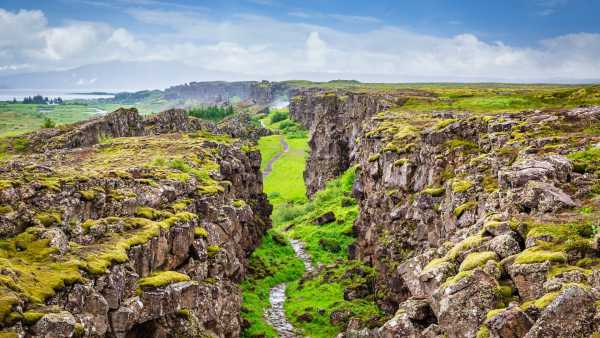
The rift between the North American and Eurasian tectonic plates is visible in Thingvellir National Park in Iceland.
Continental crust is lighter than oceanic crust and floats above the destruction caused by subduction. However, very little remains from Earth's early days, and what remains has been eroded and deformed. Less than 7% of the rocks on Earth's surface today are older than 2.5 billion years. If we go back to the period before 4.03 billion years, the Hadean Eon, the rock record disappears completely. The first half-billion years of Earth's existence left behind not a single piece of basalt.
Due to the constant cycle of planetary processes, the oldest irrefutable evidence of plate tectonics—rocks formed exclusively in subduction zones—dates back only about 700 million years. Another compelling piece of evidence comes from fragments of oceanic crust, displaced onto continental crust during the onset of subduction, which appeared worldwide about 900 million years ago. During this geological period, multicellular animals such as sea sponges and comb jellies were just beginning to emerge.
Some geologists believe that plate tectonics has only been active since then. However, more suspect that plate tectonics arose earlier, in the Archean eon, which lasted from 4 to 2.5 billion years ago. Evidence is based primarily on chemical analysis of rocks. For example, around 3 billion years ago, there are hints that increasing amounts of the Earth's crust were melting and reforming, rather than forming directly from mantle rocks. Around 3.8 billion years ago, a change in the chemistry of Earth's oldest minerals suggests a transition from a stable, long-lived crust to a shorter-lived, more modern-looking one, possibly indicating the onset of subduction. Although there is no single agreed-upon date, the Archean eon appears promising as a time when major geological changes occurred on Earth.
You may like
-
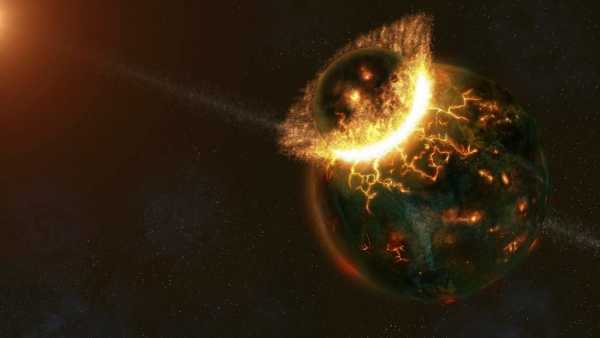
New research suggests that a catastrophic collision with a neighboring planet may be the reason for the existence of life on Earth.
-
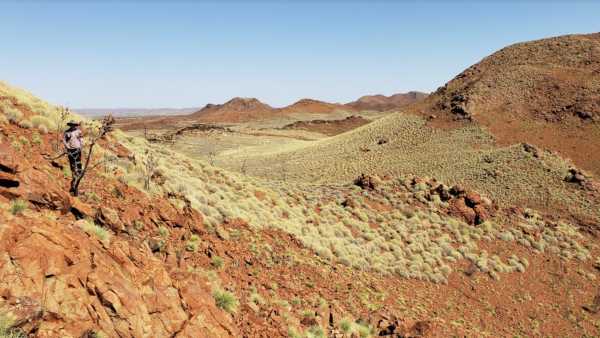
Research raises important questions about Earth's 'oldest' impact crater
-

Scientists have discovered that the geology that supports the Himalayas is not what we thought.
“This points to a really important transition,” said Nadia Drabon, an Earth and planetary scientist at Harvard University who led the study pointing to the shift to a shorter-lived crust.
A handful of sand
Geologists agree that whenever tectonics began, it likely contributed to the evolution and complexity of life.
“There may be billions of planets out there with some kind of primitive life, but building a radio transmitter or launching a spacecraft requires a specific set of circumstances that are likely to only occur on a planet with plate tectonics and oceans and continents,” Robert Stern, a geologist at the University of Texas at Dallas, told Live Science.
In prehistoric animals, plate tectonic activity was associated with faster rates of evolution, likely because geological movements separated habitats and created new niches for life to develop.
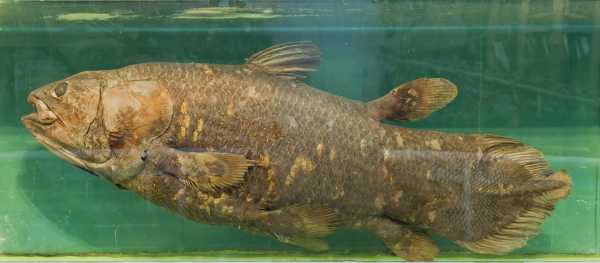
Past research suggests that the coelacanth's evolution was likely driven in part by plate tectonics.
Plate tectonics may also have facilitated the recovery of life after devastating mass extinctions. For example, at the end of the Permian Period, a mass extinction caused by carbon dioxide-releasing volcanic eruptions wiped out 90% of Earth's species. Life on the planet eventually recovered as the weathering of continental rocks broke down carbon-bearing minerals and washed them into the ocean, where marine organisms converted them into reefs and shells, which then hardened into limestone and eventually sank back into the planet's interior. As the atmosphere spiraled out of control, plate tectonics gradually returned Earth to an environment more hospitable to life.
While nearly all geologist agree that without plate tectonics, life on Earth might have been limited to primitive organisms, a small group of researchers now suggests that plate tectonics may have arisen even earlier—perhaps facilitating the origin of life itself by transporting life-sustaining minerals from the planet's interior into the crust.
This is a complex topic, taking researchers back 4 billion years to the Hadean eon. The only direct evidence from the first 500 million years of Earth's existence is the presence of zircons—minerals that are preserved by melting at the temperatures and pressures of the mantle. Although the rocks that once contained these minerals have melted, the zircons, which are smaller than grains of sand, have survived.
“They're so tiny, and we're just throwing our fists at them, trying to get all the information we can out of them,” Drabon told Live Science.
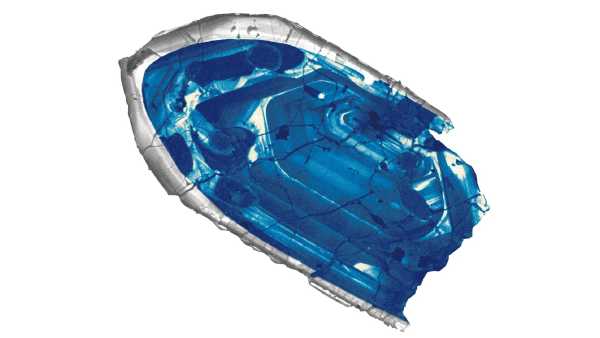
A 4.4-billion-year-old zircon from the Jack Hills, Australia. Because zircons don't melt at mantle temperatures, they represent a snapshot of early Earth, preserved to the present day.
These Hadean zircons are extremely rare; all of them found worldwide would likely fit in a thimble. However, this handful revealed that Earth already had an ocean 4.4 billion years ago—just 200 million years after the planet's formation and shortly before the emergence of the ancestor of all modern life. According to a study published in June, by just 600 million years after Earth's formation, the planet had both land and fresh water.
Some researchers believe this indicates that the Earth's crust may have been recirculated during the Hadean. Water weakens the crust, creating the potential for its failure and, consequently, subduction, according to Jun Korenaga, a geophysicist at Yale University. Since water is essential for plate tectonics, this raises the question: “Why wouldn't we have plate tectonics if we had surface water?” Korenaga said.
In an experimental study published in 2023, researchers melted rocks under high pressure and found that conditions simulating subduction resulted in the formation of rocks similar to Earth's oldest rocks. Korenaga also argues that plate tectonics is the only effective way to reduce the amount of carbon dioxide in the early Earth's atmosphere from the levels observed on Venus to the more moderate concentrations that existed on Earth by the beginning of the Archean.
Interestingly, another significant event occurred during the Hadean period, one that clearly distinguishes Earth from its rocky neighbors: approximately 100 million years after Earth's formation, a planet-sized body slammed into it, completely shattering and melting both bodies and ejecting material that would later become the Moon. A paper published earlier this year modeled this collision and found that the mixing of the two bodies could have generated plumes of hot material in Earth's mantle, which may have initiated subduction approximately 200 million years later.
New supercomputer simulation sheds light on the Moon's origins — YouTube
See more
“Why is Earth the only rocky planet with plate tectonics?” asked Qian Yuan, lead author of the paper and a research scientist in geodynamics at the California Institute of Technology. “I think the main factor may be the giant impact that led to the formation of the Moon.”
But not everyone is convinced. A Hadean origin for plate tectonics is an intriguing idea, T. Mark Harrison, professor emeritus of geological sciences at the University of California, Los Angeles, told Live Science, but the evidence is still quite thin. He worries that geologists across the board are being overconfident in their claims. “But the last thing we need is a new form of groupthink based, literally, on a thimbleful of grains of sand,” Harrison wrote in an article with the appropriately blunt title “We Don't Know When Plate Tectonics Began.”
Life in other worlds
If plate tectonics is the source of life, or at least complex life, the search for other organisms among the stars could lead humanity to a geologically active planet.
Unfortunately, we can't yet detect plate tectonics on distant exoplanets, said Tobias Meyer, an expert in mantle dynamics at the University of Oxford. However, in 2021, Meyer and his team, using thermal data and computer modeling, determined that the rocky exoplanet LHS 3844 b, located 49 light-years from Earth, may have an active mantle and a moving crust.
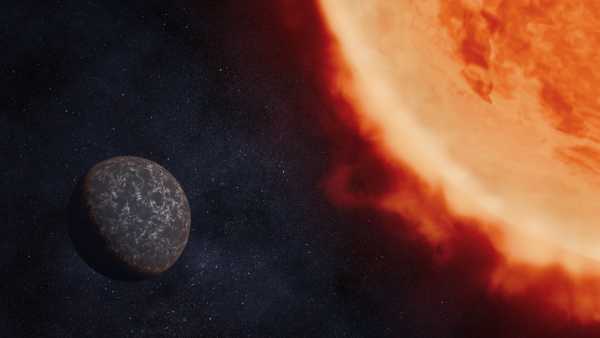
Researchers suggest that the exoplanet LHS 3844b, located 49 light years from Earth, may also have plate tectonics.
Life on LHS 3844 b is unlikely. It orbits very close to its star and has no atmosphere. One half of the planet is constantly exposed to daylight, with temperatures of 1412 degrees Fahrenheit (767 degrees Celsius), while the other half experiences nighttime temperatures of minus 429 degrees Fahrenheit (minus 273 degrees Celsius). It is this temperature difference between the two sides of the planet that drives the movement of LHS 3844 b's mantle, Meyer and his colleagues reported in 2021. If this version of plate tectonics is real, it is quite unlike that on Earth. But it demonstrates the diversity of planetary geology that may lurk elsewhere in space.
“Ultimately, understanding the causes of tectonics and whether it might occur on different planets will help us understand whether those planets would be habitable,” Meyer said.
RELATED STORIES
— When did plate tectonics begin?
— How many tectonic plates are there on Earth?
— A study of ancient rocks in Australia shows that plate tectonics became active at least 3 billion years ago.
More powerful telescopes, such as the James Webb Space Telescope, may soon yield more precise data on the geology of exoplanets. But Earth's close neighbors also deserve close attention, says Craig O'Neill, a geophysicist at the Queensland University of Technology in Australia. Venus is very close, and whether it had plate tectonics in the past is still debated. Understanding its modern geology, with its single-layered surface, could help scientists understand why the two planets' fates diverged, and whether plate tectonics could explain why one planet harbors life while the other likely does not.
“Much of our future research into plate tectonics will depend on looking up rather than looking inward,” O'Neill told Live Science.
TOPICS: Plate Tectonics: Science in Focus

Stephanie Pappas, Social Link Navigator, Live Science Contributor
Stephanie Pappas is a freelance writer for Live Science, covering a wide range of topics, from geological sciences and archaeology to the human brain and behavior. Previously a senior writer for Live Science, she now works as a freelance writer in Denver, Colorado, and regularly contributes to Scientific American and The Monitor, the monthly magazine of the American Psychological Association. Stephanie earned a bachelor's degree in psychology from the University of South Carolina and a graduate certificate in science communication from the University of California, Santa Cruz.
You must verify your public display name before commenting.
Please log out and log back in. You will then be asked to enter a display name.
Exit Read more
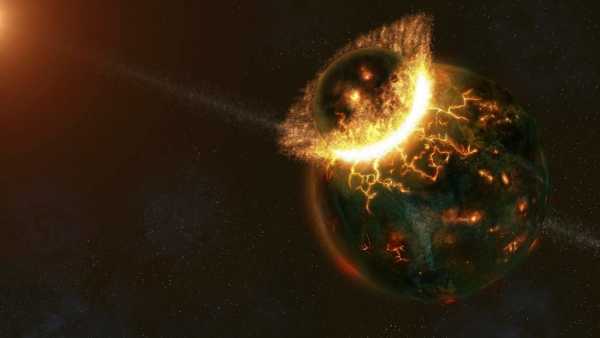
New research suggests that a catastrophic collision with a neighboring planet may be the reason for the existence of life on Earth.
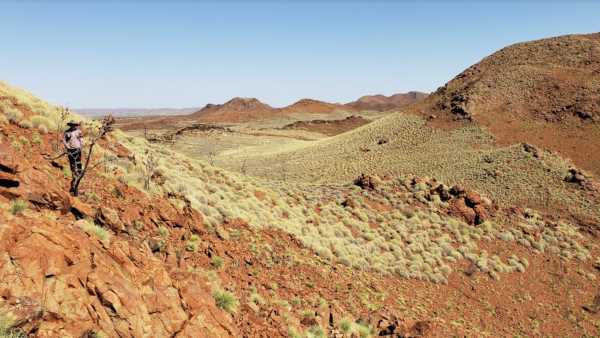
Research raises important questions about Earth's 'oldest' impact crater

Scientists have discovered that the geology that supports the Himalayas is not what we thought.
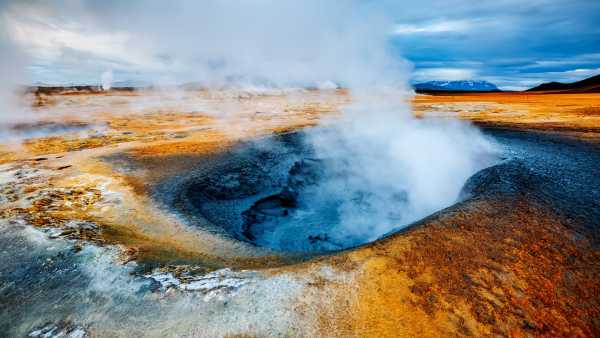
Enormous formations deep beneath the Earth's surface appear to be causing gigantic volcanic eruptions
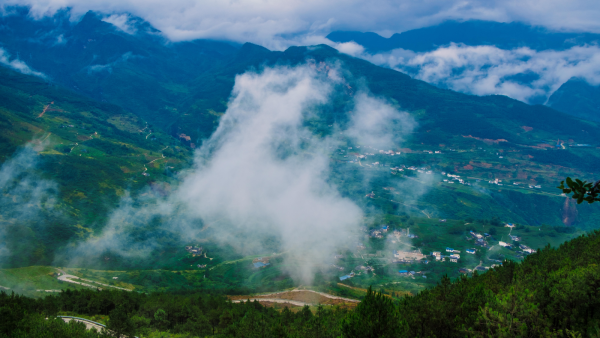
A 400-mile-long chain of fossilized volcanoes has been discovered under China.
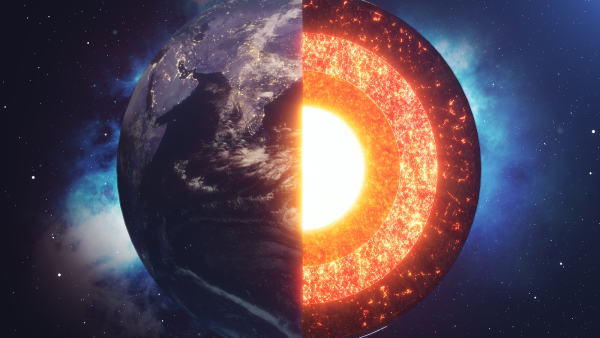
We are only just beginning to learn what the Earth's inner core is really made of.
Latest geology news
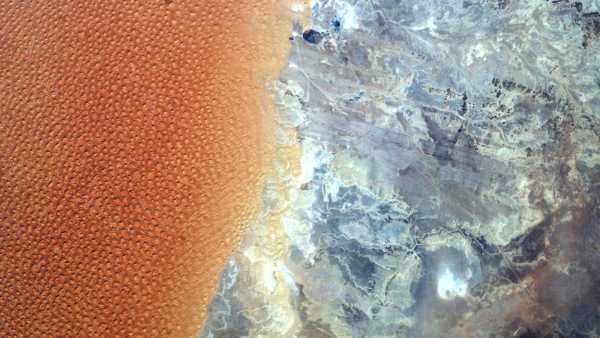
The Sahara Sea's 'star dunes' collide with an otherworldly landscape where two countries meet.
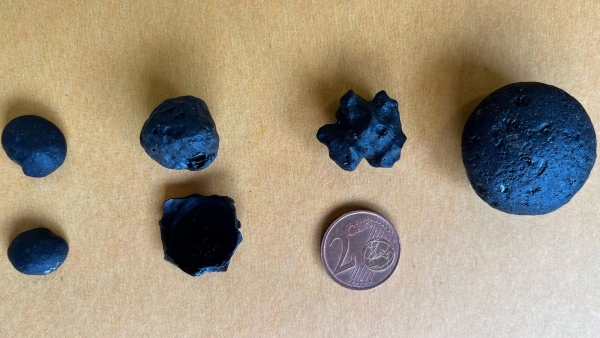
Strange glass in Australia appears to be formed by a giant asteroid impact, but scientists 'have yet to find the crater'
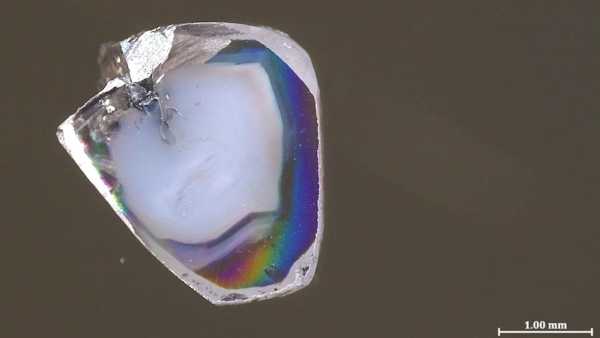
Unusual diamonds from South African mine contain 'almost impossible' chemicals
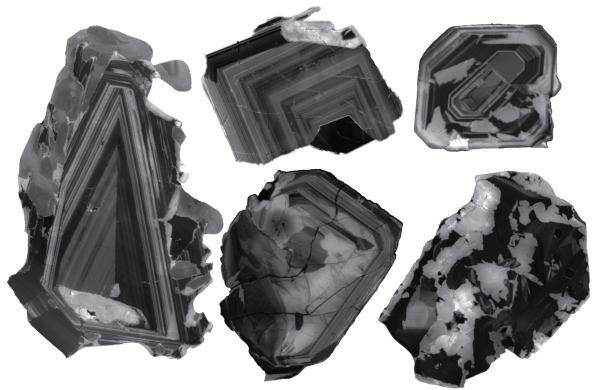
A huge source of the rare earth metal niobium was brought to the surface when the supercontinent broke apart.
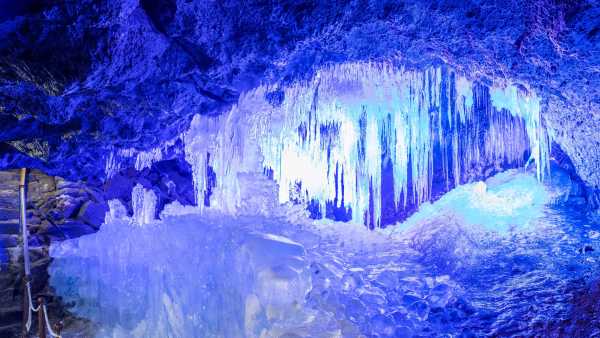
Narusawa Ice Cave: A lava tube filled with 10-foot-tall ice columns at the base of Mount Fuji.
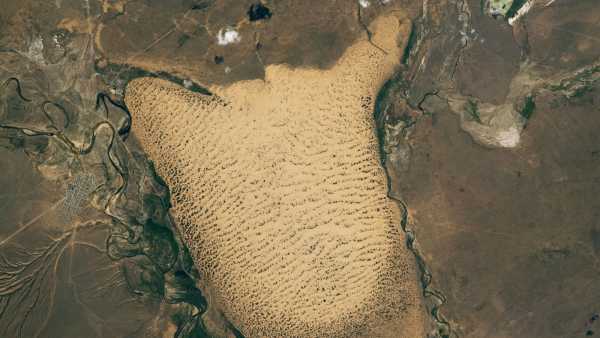
A giant sand 'slug' is crawling across floodplains in Kazakhstan, but may soon freeze in place.
Latest features
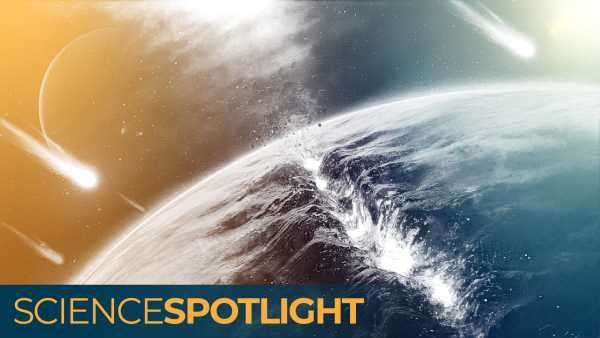
Did plate tectonics cause the origin of life? A groundbreaking new study may reveal Earth's deepest secret.

Scientists may soon be able to create a “universal antidote.” But will it save lives?
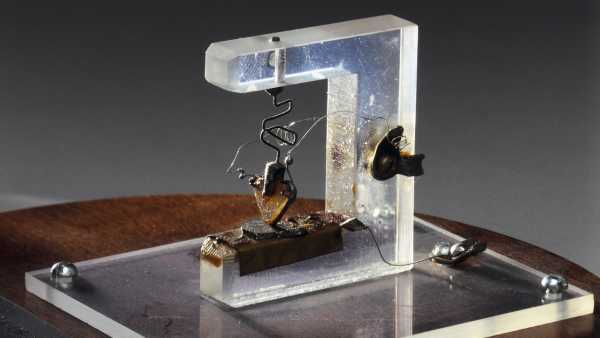
History of Science: Invention of the Transistor Opens the Era of Computing – October 3, 1950

A woman developed unusual bruises from a massage gun. It turned out she had scurvy.

Alexander Fleming wakes up to find strange mold growing in a petri dish and then accidentally discovers the first antibiotic – September 28, 1928

History of Science: Rosetta Stone Deciphered, Opening Window into Ancient Egyptian Civilization – September 27, 1822
LATEST ARTICLES

Scientists may soon be able to create a “universal antidote.” But will it save lives?
Live Science magazine is part of Future US Inc., an international media group and leading digital publisher. Visit our corporate website.
- About Us
- Contact Future experts
- Terms and Conditions
- Privacy Policy
- Cookie Policy
- Accessibility Statement
- Advertise with us
- Web notifications
- Career
- Editorial standards
- How to present history to us
© Future US, Inc. Full 7th Floor, 130 West 42nd Street, New York, NY 10036.
var dfp_config = { “site_platform”: “vanilla”, “keywords”: “type-feature,van-paywall,longform-article,serversidehawk,videoarticle,van-enable-adviser-
Sourse: www.livescience.com


